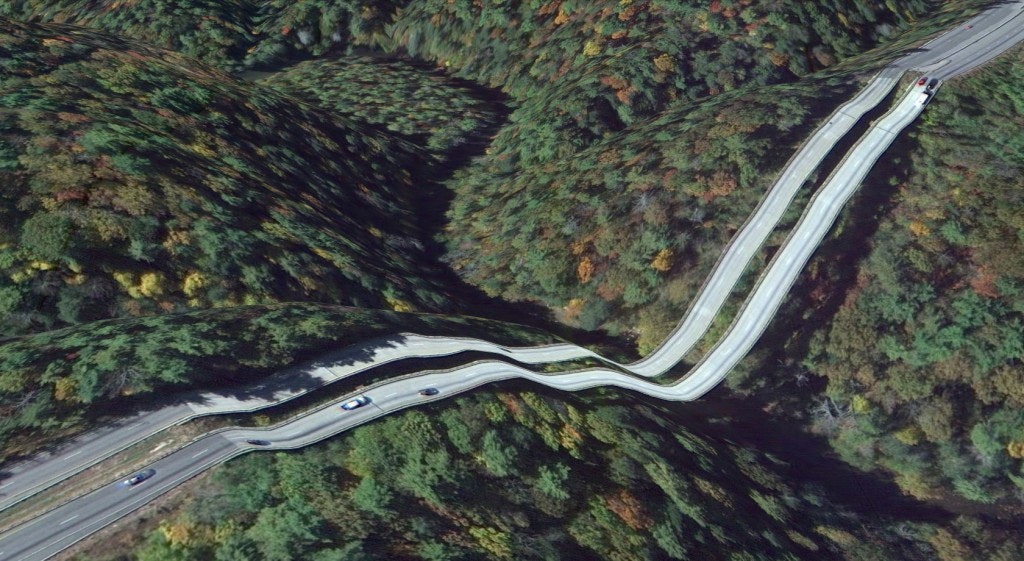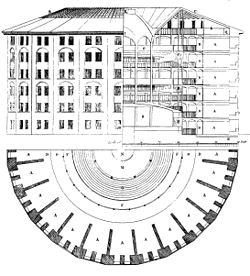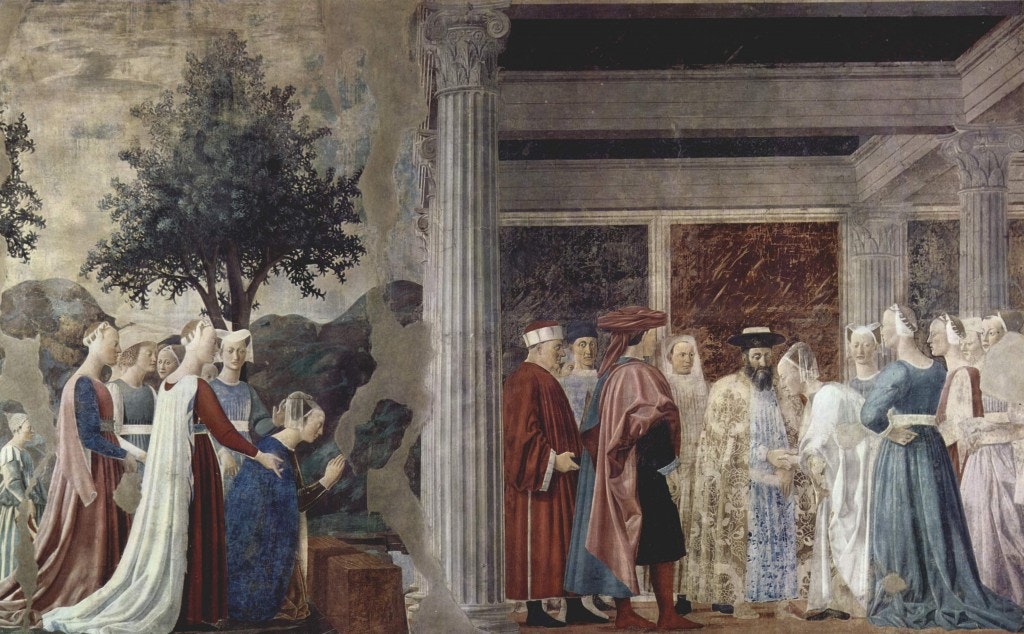Softimage and Hardimage
PS to our previous blog, “On the Invisible (Image and Algorithm)”. As a friend suggested, we should have imagined Paglen’s photo of a secret military base in the so-called top-secret lab run by Sergey Brin “in an undisclosed Bay Area location”: here is the place for thinking about secrecy. In fact, Google seems intentionally to be creating an atmosphere of mystery around “a pair of otherwise ordinary two-story red-brick buildings about a half-mile from Google’s main campus” 1Brad Stone, “Inside Google’s Secret Lab, Google X’s Silicon Valley Nerd Heaven – America’s Last Great Corporate Research Lab”, Bloomberg.com/news, 29 May 2013, http://www.bloomberg.com/news/articles/2013-05-22/inside-googles-secret-lab. It is impossible to find much information on Google (sic!) apart from two journal articles. In the one published in The New York Times in 2011 we can read: “It’s a place where your refrigerator could be connected to the Internet, so it could order groceries when they ran low. Your dinner plate could post to a social network what you’re eating. Your robot could go to the office while you stay home in your pajamas. And you could, perhaps, take an elevator to outer space.” 2Claire Cain Miller and Nick Biltonnov, “Google’s Lab of Wildest Dreams”, The New York Times, 13 November 2011.
...
So... in our previous two posts we have written about the programme of the image and the algorithmic paradigm of the image. Now we want to examine the key idea and title of our book: softimage. We chose this title because it linked two ideas that we wanted to underline: the idea of the image as software, and the idea of a soft image – a flexible, adaptable, or pliable image (which, as a result, is also a protean, multiform, and multiplatform image). In porn, soft as opposed to hard means that sex is not shown full on, but merely evoked, or enrobed by a narrative. Likewise, the softimage is an image that evokes or eludes (or even hides) in place of showing (something which Thomas Ruff explored in his nudes and JPEGs series).
Clement Valla’s series Postcards from Google Earth, which we have used for the cover design of our book, exposes visual anomalies in Google Earth: It is a perfect example of the softimage in the sense of flexible, adaptable, and pliable. But it is also a perfect example of the softimage in the sense of software, and in fact both notions go hand in hand here. The image shows what it actually is: not a photographic image but synthetic imaging. With each move within its visual interface, Google Earth recalculates and remodels the 3D structure and texture-maps a photographic image on top in the same way as you could be wallpapering your living room with, say, a panoramic view. The image, here, is pliable, because it is an image-software which recalculates (and approximates) itself in real time with each change in user location and orientation.
Valla’s Postcards from Google Earth illustrate the fact that the softimage is nothing but the visual interface of an otherwise invisible database – a data visualization that renders images ‛on the fly’. (See his own reflections on the series here). There is no hard part in this image, there is no hard image, nothing that is fixed once and for all. But if we consider the softimage as a set of rules, there is a hard part that complements it: the hardware necessary to carry them out. And here we touch upon the second point we want to examine in this blog: the term ‛softimage’ immediately convoking its opposite, that of ‛hardimage’.
In our book we argue that the two notions are consecutive elements in a temporal/ technolgical/ideological series: The old hardimage, the solid image of a solid world, and the new softimage, the flexible image of a flexible world. Let us examine this idea by going back to Renaissance painting, where ‛hard’ (and we particularly think of mural painting and painting on wood here) was the general mode of appearance of the image. Is The Ideal City, for instance, a hardimage? It is as hard as a painted panel can be, and its perfect construction displays an apparent solidity. Yet, it does not show an existing city: it shows an ideal city. It is not an image of the world, but an idea of the world; it is not a view of a city, but a political project of a city.
Let us take this occasion to dig a bit deeper into Deleuze’s and Foucault’s analysis of the mechanics of power. If we strictly follow Foucault, we will posit that in 15th century Urbino we are still in the feudal form of power that he called ‛sovereign’. As per Foucault, the disciplinary power appears (in France) with the bourgeois society and the beginning of industrialization at the end of the 17th century. But actually, the Italian city-states of the 15th century are already bourgeois societies (bourgeois stems from burgensis or borgeis designating an inhabitant of a walled town exempt from feudal justice) as well as capitalistic societies. The Ideal City with its strict organization of space (palace, amphitheatre, church, warehouse) is a project of a disciplinary society much more than that of a sovereign society.
As Didier Ottaviani writes, “disciplinary power consists in distributing individuals in space and managing their actions in time. This technique presupposes a new economy of visibility, whose architectural form is the famous Panopticon by Bentham.” 3Our translation. Didier Ottaviani, “Foucault-Deleuze: de la discipline au contrôle”, Lectures de Michel Foucault. Volume 2: Foucault et la philosophie, ed. Emmanuel Da Silva et al. (Paris: ENS edition 2003), 59–73, here 60–61. Available online: http://books.openedition.org/enseditions/121 Contrary to other accounts that analyze the Panopticon – a late 18th century prison design by Jeremy Bentham which has never been realised as such – as a one-way system of surveillance (of prisoners/citizens), Ottaviani emphasizes mutuality: While each cell has an opening towards the central tower, which places its occupants under a regime of “total visibility”, the tower as the “place of power” offers itself as a spectacle which is both visible and unverifiable (because its interior is masked). The power is thus an “absent present”, a “virtuality”, a constant possibility of surveillance 4Ibid. 6.
Drawing on Foucault’s analysis of the ‛society of discipline’, Deleuze calls the succeeding, postmodern form of power the ‛society of control’. He refers to William S. Burroughs who, in The Electronic Revolution, first published in 1970, had written: “Millions of people could nullify the control system which those who are behind Watergate and Nixon are attempting to impose” 5William S. Burroughs, The Electronic Revolution (ubuclassics 2005; originally published in 1970 by Expanded Media Editions). Available online: http://www.ubu.com/historical/burroughs/index.htm. As per Deleuze, the space of the society of control is no longer one of material confinement and one can be imprisoned in open space, such as when wearing electronic handcuffs. Today, we would say, such as when being in “cellspace”, the grid-like space constituted by mobile phone antennas and GPS satellites, something we have analyzed in an article called “Brave New City: The Image in the Urban Data-Space”, forthcoming in Visual Communication.
In a nutshell, we could say that the modern project was the construction of a solid subject, well located, well temporalized (and tempered), and, most importantly, in view (in plain sight). There was something very theatrical in fact in this form of representation, as for instance in the paintings by Piero della Francesca.
The hardimage is the place for this construction of a solid subject (through painting, and later, photography), a solidity which, for a long time coincided with the solidity of its representation. But the perfect visibility of the modern subject allows her in turn to see, and to face (as a solid group) her opponent: the enemy army, the state, the industry etc. It allows for the dynamics of war or revolution, a dynamics that the control society tries hard to undermine taking over from their enemies the strategies of guerrilla and asymmetric warfare: invisibility and latent threat. The visible measures of control (airport scans, CCTV cameras) are but a camouflage of a system of total control, whose imperfection (invoked after each terrorist attack) is only apparent because what the control society relies on is in fact permanent insecurity (at work, in the streets, and at home). In today’s Empire or global system of power, to speak with Michael Hardt and Antonio Negri, where the multitude “both sustains the Empire and calls for its destruction” 6 Michael Hardt and Antonio Negri, Empire (Cambridge/MA: Harvard University Press 2000), 61, the hardimage is replaced by a softimage, multiple and invisible, whose “mechanisms of Command become ever more ‛democratic’, ever more immanent to the social field, distributed throughout the brains and bodies of the citizens” 7Empire, 23.
We could not resist the pleasure to share the next sentence of the text:
“The behaviors of social integration and exclusion proper to rule are thus increasingly interiorized within the subjects themselves. Power is now exercised through machines that directly organize the brains (in communication systems, information networks, etc.) and bodies (in welfare systems, monitored activities, etc.) toward a state of autonomous alienation from the sense of life and the desire for creativity.” 8Ibid.
...
Lately, when reading Ramón Reichert’s and Annika Richterich’s article “Digital Materialism”, we are reminded of Friedrich Kittler’s seminal paper, “There is No Software” (1995) presenting, as the authors put it, “the provocative idea that software was simply a figment of our imagination, obscuring our view of what is actually relevant: the hardware”. 9Ramón Reichert and Annika Richterich, “Introduction: Digital Materialism”, Digital Culture & Society 1 (1), September 2015, ed. Ramón Reichert, Annika Richterich, Pablo Abend, Mathias Fuchs, and Karin Wenz, 5–17. Kittler’s article, “Es gibt keine Software”, was first published as a chapter in his Draculas Vermächtnis. Technische Schriften (Leipzig: Reclam 1993), 225–242, and in 1995 as “There is No Software” in Ctheory.net, 18 October 1995, http://www.ctheory.net/articles.aspx?id=74. Kittler’s argument is very productive when applied to the softimage: The softimage is simply a figment of our imagination, obscuring our view of what is actually relevant: the hardware. This seems to be in total contradiction to what we have been arguing all along here: that the on-screen image obscures the view of what is actually relevant: the software hidden off-screen. But if we follow Kittler, what we actually have is a double screen between us and the hardware, that of the image and that of the software. What hardware exactly? If our hypothesis of the image as program is true, then the hardware is the material structure which allows this program to run, that is, the printed circuit board – not the actual hardwiring of electronic components in a computer as Kittler, Ernst, and Parikka would have it, but the hardwiring of the programme of the image in a larger structural sense: the economic and political mechanisms enabling its circulation and exchange.
In a world of commerce where things exist only insofar as they can be exchanged, the main economic mechanism and the main political mechanism converge into one single mechanism: the neoliberal market mechanism of supply and demand, where the circulation of images is in fact tightly controlled. This is the reason why the images of the collapse of the World Trade Center are completely obscene. They are viral, destroying the very structure (material and symbolic) that would have suppressed them. Or maybe this structure was already obsolete and the hardware, displayed as an icon in the centre of the city, has long begun its becoming-invisible, or offshoring. (We want to salute here the recently passed-away John Urry, author of the book Offshoring, which draws a dystopian present – but ends on a positive note: the possibility of “reshoring” 10John Urry, Offshoring (Cambridge: Polity 2014). We would also like to share the link to his 2014 TEDxTalk introducing the book: https://www.youtube.com/watch?v=1vjtIyThQzQ..)



